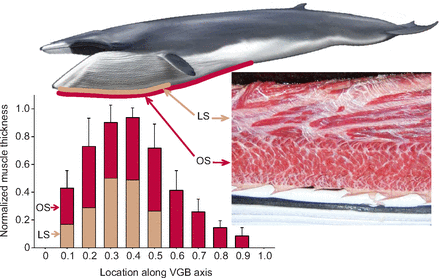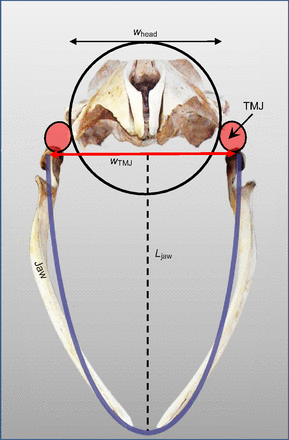
Muscular System
In this section we will look at some of the interesting muscular features and adaptations in the Blue Whales.
As you can imagine, to move such a large body through a medium with so much drag such as water takes an incredible amount of strength. For blue whales the muscles in their tails can generate upwards of 60 kN (kilonewtons) of force and its estimated that in a sprint or a fast deep dive they can generate much more then that.
But not only are blue whales naturally immensely strong but they have some very interesting adaptations with in the musculature that have evolved over thousands of years.




One of these adaptations come sin the formation for their muscles of their mouths' that are able to expand as much as the skin. there is two layers of muscle that play a roll in the expansion of the whales mouth. The first layer is called oblique strata (OS) that is located through out the whole portion of the expanding mouth, while other layer which is called the Longitudinal Strata is only located from the tip of the lower jaw to the joint called the temporomandibular joint. To learn more about this join look below.
The LS is predominantly used in the opening and closing of the mouth it self while playing little to no effect in the whales ability to engorged itself. The role of the OS how ever works in tandem with a special layering of blubber called the Ventral Grove Blubber (VGB) to allow the whale to not only expand its mouth but spring back when not extended.
The LS runs parallel with the body of the whale, while the OS is at 45 degree angles from the body with a bunch of elastic elastin and cologin connective tissue in-between the fibers. When the whale takes in a mouthful of prey dense water the VGB unfolds and can expand the groves over 300% larger and the OS layer also is allowed to expand at a similar rate, but then can pull the groves back together once the whale pushes the water out through the baleen.

A few other macular adaptations found in the blue whale can also be found in the head of the animal. The first gives the whale the ability to completely dislocate its jaw while feeding in order to take in as much prey as possible. There is actually no bone connection in the jaw of a blue whale, and the jaw can fully come off from the rest of the skull. The muscle then allows them to bring their jaw back into alignment with their skull.
Another fascinating muscular feature found on the blue whale Aswell as other of the baleen whale is they have muscular attachment next to their blowholes that allow them to close their nostrils during long dives.

